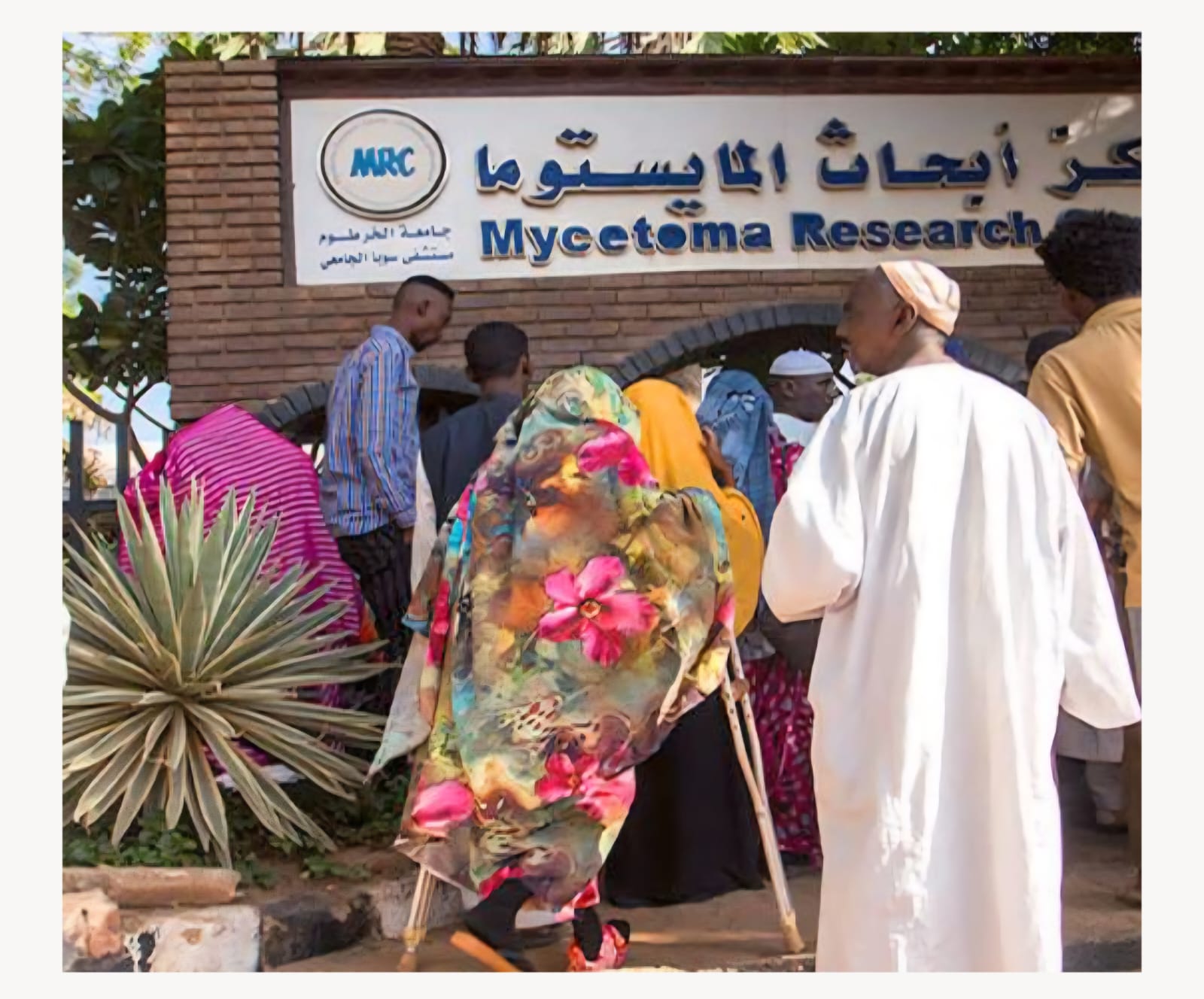Khartoum, 31 May 2025
(Al-Alq Center for Press Services)
In a devastating blow to the fight against one of the world’s most neglected tropical diseases, the World Health Organization’s Sudan office has announced the destruction of the country’s only Mycetoma Research Center. The facility, located in Khartoum, was destroyed after nearly two years of military conflict, resulting in the loss of decades’ worth of vital biological data. This catastrophe endangers thousands of patients and severely hampers future research.
Mycetoma is endemic to rural regions in Sudan, particularly in the states of Sennar, Gezira, White Nile, and North Darfur. It is caused by bacteria or fungi entering the body—typically through thorn pricks in agricultural fields—leading to malignant destruction of the skin, bone, and muscle. The World Health Organization classified Mycetoma as a neglected tropical disease in 2016 due to the lack of effective treatment and its devastating impact on the health of the poor, particularly those in remote areas with limited access to healthcare.
Dr. Bakhita Osman, an agricultural expert, told Al-Alq Center for Press Services that the disease “primarily affects the poor, who become unable to work and are often socially isolated due to the ulcers caused by the infection.” She added that Mycetoma typically affects the feet, leading to chronic infections that can cause severe deformities, potentially resulting in disability or amputation. The disease also leads to psychological trauma, including social withdrawal, due to the disfigurement and secretions.
Dr. Ahmed Fahal, founder and director of the center, emphasized that Mycetoma “affects people in remote areas, particularly those who walk barefoot—mostly field workers and children.” He pointed out that treating the disease is a challenge due to the high cost and limited availability of medication, which often has severe side effects. Treatment can last for months, and in severe cases, the disease may lead to death, with amputation often being the only viable option.
A Loss of 40 Years of Scientific Heritage
Dr. Fahal stated that the destruction of the center meant, “we lost everything in our biobanks, which contained over 40 years’ worth of data.” This invaluable data was a global resource for researchers working to better understand the disease and develop new treatments. Its loss represents a major setback in the global fight against Mycetoma.
Roughly 20% of Mycetoma patients, who are among the poorest segments of the population, have undergone amputation of a foot, leg, or hand.
A Comprehensive Approach to Treatment and Awareness
The Mycetoma Research Center was established in 1991 under the auspices of the University of Khartoum and was the world’s only dedicated center for Mycetoma research. It was not just a treatment facility but a holistic beacon tackling the disease from multiple angles. Its core activities included:
Healthcare and Treatment:
The center received around 12,000 patients annually, offering free medical care including diagnosis, treatment, and psychological and social support. Since its founding, it had treated over 9,000 patients from across Sudan at no cost and performed numerous surgical procedures, including life-saving amputations.
Scientific Research and Development:
The center conducted advanced scientific research on Mycetoma, including pioneering clinical trials. It participated in global trials of promising treatments such as “Fosravuconazole” in collaboration with the Drugs for Neglected Diseases initiative (DNDi) and Japan’s Eisai pharmaceutical company, underlining its central role in seeking new therapeutic solutions.
Advanced Laboratory Diagnostics:
The center offered free diagnostic services, including advanced lab tests like DNA analysis to accurately identify the disease’s causative agents—services provided for the first time in Sudan at no cost to patients.
Awareness and Community Engagement:
The center played a key role in raising awareness about Mycetoma, its dangers, and the importance of early treatment. It launched continuous awareness campaigns through posters and educational films and organized medical and educational outreach missions to endemic areas across Sudan.
Capacity Building and Training:
The center trained medical and science students as well as healthcare workers in diagnosing and treating Mycetoma, contributing to the development of local expertise in disease management.
International Collaboration and Partnerships:
It built a broad network of partnerships with international organizations and institutions such as the WHO, DNDi, Eisai, and Nagasaki University, facilitating knowledge exchange and contributing to global efforts to combat neglected diseases.
A Multidisciplinary Care Model:
The center adopted an integrated approach to Mycetoma management, combining medical, surgical, and rehabilitative interventions to offer a comprehensive and effective care model, with a strong emphasis on patient-centered treatment.
An Urgent Call for Reconstruction
This disaster highlights the dire situation faced by herders and marginalized communities in Sudan, where hospitals are insufficient to meet the needs of children, women, the elderly, and patients in general. A recent study by the UNDP and the International Food Policy Research Institute revealed the impact of the conflict on rural household incomes, exacerbating vulnerabilities in access to housing, infrastructure, and services.
Given the profound implications of the Mycetoma Center’s destruction for both patients and scientific research, it is essential to spotlight this issue in the media to advocate for efforts to rebuild the center. Reviving its work is crucial for continuing life-saving treatment for farmers, herders, and children across Sudan.
This report was prepared by Al-Alq Center for Press Services and published by the Sudanese Media Forum and its member institutions to shed light on the damage inflicted upon Sudan’s healthcare infrastructure as a result of the ongoing conflict.
